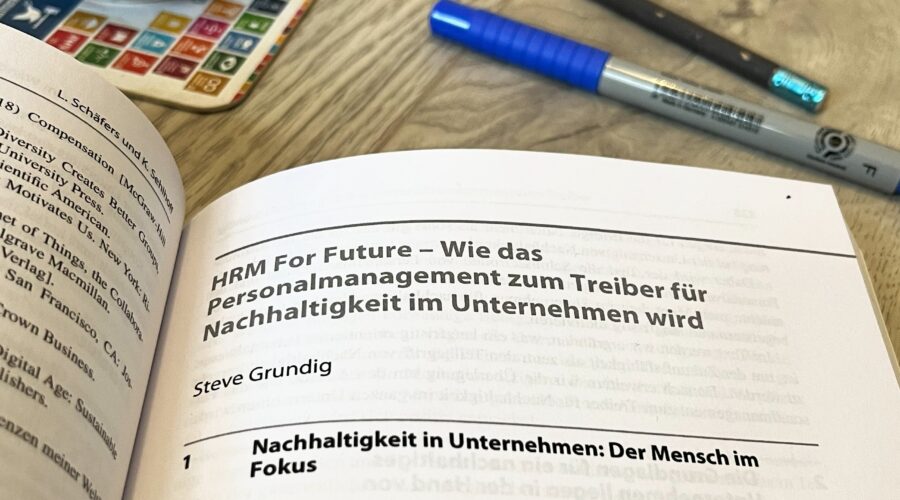Sustainability in companies is not realised through technical innovation, strategy papers or management systems alone. It requires people who make sustainable day-to-day decisions and behaviours in the company on a daily basis. In order to scrutinise non-sustainable practices and make suggestions for improvement, an understanding and fundamental motivation for sustainability in the company is required. When a company takes on the challenge of developing a Sustainable development then the questions arise:
How motivate I mean Employees for sustainability?
And:
I want to get employees excited about sustainability, what are Good approaches and concrete examples in favour?
We want to explore these questions and present 15 practical approaches.
Contents
- How do I create motivation for sustainability in the company?
- Our 15 practical examples: Measures and approaches that inspire employees for sustainability
- Take time, give time, allow time
- Setting the right topic focus
- Conclusion and further contributions
Methods and best practice for sustainability in your mailbox

How do I create motivation for sustainability in the company?
Motivation is already intrinsically present in some people. Seemingly without much effort, these people are always well informed and motivated to take care of sustainability in their day-to-day work. Even if it seems complicated or incomprehensible at first. They do their research, know the latest ESG-trends, proactively contribute ideas for improvement and take extra time. In this way, they find more environmentally friendly or socially positive alternatives for the company. Motivation for sustainability does not need to be created here, it just needs to be maintained.
On the other hand, it is more typical that motivation still needs to be awakened. This is definitely possible in every work team and company! However, there are a few prerequisites for this. We have identified five concrete foundations for this, which we outline below:
5 prerequisites for motivation for sustainability
- Understanding in favour, what sustainability means and where the connections to everyday working life are. Here, it is important to recognise the significance of ESG topics and sustainability issues for your own company or area of work. It is also important to know where there is relevant influence (leverage) on environmental, social and societal aspects. „Breaking it down“ to the department or daily work tasks helps to make the big word sustainability tangible and applicable.
- Resourcesto be able to engage with new topics and thoughts. This includes Time, human resources and budget for the realisation of sustainable ideas. If you are under constant stress or already have a workload of almost 100%, you will have no capacity for new tasks. The constant fight for every euro also slows down initiatives and is at odds with trying out different approaches or learning new behaviours.
- Knowledge, What are the levers for sustainable action in the company or which rules of thumb can be used for sustainable decisions? Checklists or comparative figures can help here, so that you do not have to analyse the exact effect of a measure in every professional situation, but still have orientation. Expertise, methodological knowledge, knowledge of technical approaches or social skills, for example, may be required to promote sustainable action in the company. If the knowledge and Expertise in application employees inevitably fail to meet the challenges of sustainability. This undoubtedly destroys the motivation for sustainability in the company.
- Exchange and opportunities to ask questions are important for reflection or for asking questions in the event of uncertainty. Like any new topic, the implementation of sustainability also brings with it resistance, setbacks or previously unknown hurdles. Sharing ideas with others in a similar situation helps. Experts provide support with their outside perspective and make it easier to find sustainable solutions quickly, which makes it easier to make continuous progress. Sharing ideas with people who have gone through similar processes and overcome obstacles is also worth its weight in gold when it comes to maintaining motivation for sustainability within the company.
- Work environment and corporate culture, where sustainability is promoted and commitment to it is recognised. Those responsible for sustainability must therefore be aware that ambitions and employee motivation will be nipped in the bud if the working environment and corporate culture have a completely different focus. It is therefore essential to create an environment in which sustainability is recognised as a fundamental value and commitment to the cause is encouraged. What lies behind a Corporate culture of sustainability we have already HERE described in another technical article.
With these five basic principles, you can strengthen the motivation for sustainability in your company. They also consolidate existing motivation or strengthen the employees who are already committed.

Our 15 practical examples: Good measures and approaches that inspire employees for sustainability
The basic requirements are now known. In line with this, we have 15 tried and tested Approaches have been compiled. You can use these sample measures to put the basic principles into practice.
Creating an understanding of sustainability and a connection to everyday working life
- Motto of the month: Each month is organised around a theme. Saving water, reducing packaging, social responsibility in the supply chain with business partners, etc. Employees are made aware of the topic in a short briefing at the beginning of the month and are then asked to note down for a month where they recognise points of contact and opportunities for improvement in their day-to-day work. After one month, the results are collated. Employees can now see the many connections and initial solutions to the selected sustainability topic.
- Competition for sustainable behaviour: In the example, in the first month, the waste produced in the office is collected in a way that is clearly visible to each department (e.g. with bin bags). In the next month, an attempt is made to avoid as much waste as possible. The team with the highest percentage reduction compared to the previous month wins. Of course, you can use more than just waste as a measure here. You could also use electricity consumption, climate emissions saved or people supported through fair procurement as a competition parameter.
- Eco-mapping: On the floor plan of the department, on the factory premises or along the production line, employees are asked to mark weak points and potential for sustainability during a tour. This can, for example, focus on environmental issues such as electricity, paper, material consumption, waste heat, etc. Such a mapping can also be carried out along social aspects (social mapping). This includes questions such as where stressors and health hazards such as noise, dust, dangerous situations lurk or where social interactions are enabled or inhibited. This mapping raises awareness of where ESG and sustainability issues are present in the working environment.

Resources
- Agenda item for every strategy meeting or team meetingSustainability is a regular item on the agenda at meetings. This shows employees and managers that sustainability is important and is taken seriously. If there is an opportunity and time to talk about it, the space opens up to regularly address obstacles or opportunities for sustainability and current ESG trends and resolve them at decision-making level. As a result, ethical questions about upcoming strategic decisions, current problems in the transition to sustainable production or planned activities for social responsibility towards suppliers can be regularly discussed.
- Sustainability events: Sustainable action days with impulses and workshop elements create a period of time to deal with specific issues in a targeted manner and outside of everyday working life. Examples include specialist days or retreats with training and practical elements. Also a Workation, a Format for developing a sustainability challenge or a methodically guided weekend with Sustainable Design Thinking elements are possible.
- Innovation budget: A small (!) project outline is used to apply for a sustainability budget to implement small changes in the immediate environment. Eco or social mapping, for example, is a good pool of ideas for this. This is a low-threshold way of promoting pilot solutions that can be transferred to the entire company or other locations if successfully implemented.
Knowledge
- Green board: ESG information and news relating to sustainability are regularly posted on the notice board for employees.
- Internal expertsOnce the sustainability process has been initiated, true sustainability experts will develop in every company over time. These experts can be invited to share their knowledge and instruct other colleagues in internal training sessions. Alternatively, they can report on sustainable solutions from their specialist area in a video.
- Bites of knowledge: Use your own company app or social media channels to spread discussions, surveys or snippets of information about sustainability. These mini-learnings can also be interactive, such as calculating your own CO2 footprint or the integration of mini-games relating to sustainability. The inclusion of knowledge snippets in the internal newsletter is also an obvious option.
- Bites of knowledge - now literally: During the joint lunch break or coffee break, one person prepares information, ESG news or an insight into sustainability. How to turn sustainability into a conversation during the break.

Exchange and opportunities to ask questions
- Sustainability Channels: Open a channel in the company's own communication tool or open a group on social media where you can post questions and suggestions about sustainability in the company. Either the swarm of knowledge provides answers or there is a responsible person, e.g. a manager. CSR- or sustainability officer who researches answers. In any case, you get help and feedback and you realise that you are not alone with the challenges. This increases motivation for sustainability in the company.
- Sustainability exchange round: Those responsible for sustainability come together in a relaxed atmosphere with a coffee or other hot drink, e.g. every second Wednesday afternoon. They can bring along their own questions, innovative approaches or success stories. The participants are often in a similar situation and can therefore offer each other advice and motivation. The exchange provides new impetus for the implementation of ESG topics and helps to overcome setbacks and resistance. There is no fixed agenda, but participants are regularly invited to attend. The reunion of familiar faces, who are nevertheless allies for the sustainable cause, increases trust and the desire to exchange ideas.
In larger companies or groups, these can be the CSR or sustainability officers from different departments or locations. For small companies or SMEs, this „regulars“ table group" can be organised via chambers (IHK, HWK etc.) or an industry association. The meeting can also take place virtually and the choice of drinks and dates is of course up to you.
Work environment and corporate culture
- Green Nudging: With a behavioural analysis perspective, it is possible to observe where non-sustainable behaviour is promoted and where sustainable action is hindered. To change behaviour, the „Green nudging“ approach are applied. Green nudging means adapting people's environment or workplace so that they automatically act more sustainably. Simple examples of nudging towards sustainability are Setting double-sided printing as standard; offering covered bicycle parking directly in front of the entrance or always placing organic fruit and fairtrade products at handle height in the company canteen.
The procedure as an interactive measure is as follows: The participants are sensitised to nudging with a mini training session. This is followed by a two-week search for sustainable and non-sustainable nudges in each department or along production processes. The participants then collate everything, exchange ideas and implement the sustainability nudges they have found in their working environment. We have written a detailed article on behavioural change here.
- Strong role models: If the leadership, i.e. the team leader, management or executive board, takes an ambitious approach, this motivates employees enormously to adopt sustainable behaviour themselves. For example, if the Management Board announces that it will no longer use domestic flights from now on in favour of environmentally friendly business mobility, this sends a strong signal to all company employees.
- Sustainability resolutions: It is of course possible to set far-reaching targets that contribute to the company's social or environmental objectives. A more participatory approach is to encourage team members and employees to make their own resolutions. This is done, for example, in the annual appraisal interview with the open question of which resolution the person would like to pursue as a contribution to one of the relevant sustainability topics or ESG goals. In this way, they engage with their own sustainability efforts and can make their own decision - which is often very motivating.
One approach - double effect
As you read, you will no doubt have noticed that we have categorised the 15 examples according to the motivational principles mentioned at the beginning to provide a better overview. However, the examples shown are rarely clear-cut and often have an effect on several points at the same time. A measure can contribute to understanding, simultaneously impart knowledge, enable an exchange or represent a favourable element for a sustainable corporate culture.
Take time, give time, allow time
Particular attention must be paid to the available resources. Above all, the time allowed is often a sticking point. On the one hand, it must be emphasised that the process towards sustainability does not work overnight, but requires staying power. One week of action or two workshops are not enough. It needs to be stabilised. The change towards more sustainable behaviour or learning new patterns of action also takes time.
In addition, working time must be made available for this because, for example, taking part in exchange rounds or researching a knowledge snapshot is also an effort. If it is perceived as an extra task in addition to the often already fully planned workload, motivation will suffer - no matter how innovative and methodically good the measure is.
Increase motivation for sustainability in the company with the right thematic focus
Before starting interactive formats to get employees excited about sustainability, it is essential to clarify the following Where does sustainability play a role in day-to-day operations? What are the relevant responsibility, social and environmental issues in the company? What are my current ESG strategy areas? Is it about consumption in the office, production or logistics? Should the focus be on the research department or the workshop? Do we have a positive social impact in the company's services? Or is a major lever initially to reduce the negative impact of products and processes on our fellow human beings and the environment?
Two examples: Experience shows that a service company will primarily focus on office operations, business mobility and social sustainability towards employees. For a manufacturing company, on the other hand, the supply chain including environmental and social aspects, purchasing, logistics and storage as well as production processes are more likely to be the relevant topics for an ESG assessment.
Narrowing it down helps to correctly align the example measures shown above thematically, i.e. to set the right impulse for the newsletter or to provide the right questions for a social or eco-mapping tour.
If you want to take a precise approach here, you can use the instrument of a strategic Materiality analysis on. This involves identifying the relevant sustainability issues for the company. The focus is also on the company's business model and core processes, as genuine sustainability must always be aimed at these areas in the long term.

Are you planning the next steps towards sustainability?
Ask me for a free information meeting.
I am ready with advice and pleasure.
Steve Grundig
Sustainability in human resources and corporate culture
Conclusion
By fulfilling the basic requirements, they awaken and strengthen the motivation for sustainability within the company. These include a fundamental understanding of where the company's activities come into contact with sustainability, as well as time and resources for implementation and an appropriate working environment that promotes commitment to sustainability.
Numerous measures are built on these foundations to get employees excited about sustainability. The approaches can be analytical, such as eco-mapping. They can also be casual and fun, such as a sustainable lunch or a team event for sustainability. Creative measures include invitations to a sustainability event with a workshop character or redesigning the workplace according to the green nudging concept. The measures presented are suggestions and are intended to inspire. It is important to develop suitable topics and questions and to adapt the formats to your own company accordingly. There are few limits to the design. We at plant values hope you have a lot of fun and will be on hand to answer any questions you may have!
Further articles and sources:
Internal:
- Culture shapes people - corporate culture for sustainable companies
- It's all about people - sustainability in HR management
- HRM for Future - the HR department as a promoter of ESG in the company
- Green nudging - with small nudges towards sustainable behaviour in the company
- The role of sustainability for job satisfaction and corporate attractiveness
- Interview with psychologist Prof. Brautmann: How to promote environmentally friendly behaviour in everyday life
- Interview with Vaude Managing Director Antje von Dewitz on sustainable corporate change
- Overview: Developing a sustainability strategy within the company
External:
- Specialist article on this: Dr Georg-Suso Sutter "CSR without HR is PR - People make the difference" in Schneider and Schmidpeter "Responsible corporate management in theory and practice" (2015), from p. 647 or can be read online in a similar formin the environmental dialogue(2018)
- Specialist article on this: Prof. Uta Kirschten "Sustainable transformation processes in companies", published in 2021 in the publication seriesSustainability management in Saxon companies
- Specialist article from the perspective of a consultant and practitioner: 5 Basics for motivation
Image sources:
- pexels.com, photos by Cottonbro, A. Piacquadio and Shvets Production





[...] 15 examples to get employees excited about sustainability [...]
[...] 15 example measures to make sustainability tangible [...]
[...] An essential prerequisite for a successful carbon footprint in companies is that climate protection or even sustainability is already an issue. This requires internal (and possibly even external) communication. In this way, acceptance of the relevant tasks and responsibilities can be created. In addition, awareness of sustainable development is created within the company. In the next step, motivation and training are on the agenda: every activity, every measure, every goal can only be achieved if there are people who are motivated and capable of implementing it. We write about how to sensitise and empower employees for sustainability in the blog article Creating motivation for sustainability in the company. [...]
[...] Generate motivation for sustainability and make sustainability a topic of conversation within the company. [...]
[...] Motivating employees and managers for sustainability [...]
[...] Take your employees with you? Here are 15 inspiring approaches for employees [...]
[...] and employees). This includes questioning people's motivation for sustainability on the one hand and psychological barriers to climate-friendly behaviour in [...] on the other.
[...] a clear commitment to sustainability by the management of many companies has led to greater motivation and willingness to implement sustainability among employees in the various areas [...]
[...] requires the right framework conditions. Firstly, a basic understanding of the importance of entrepreneurial [...]
[...] Our recommendation is not to base a sustainability strategy in companies on purely extrinsic motivation. If there is primarily intrinsic motivation, it makes sense to also awaken entrepreneurial motivation in order to enable the economic success of the sustainability strategy. If entrepreneurial motivation is the primary motivation, it is also worth building up the intrinsic motivation of management in the medium term. [...]
[...] Nudges are particularly promising if they are perceived positively, can be implemented voluntarily and are transparent. It is crucial that employees understand why they are doing something - not that they are being pressurised to do it. This motivates them to work towards greater sustainability in the company. [...]